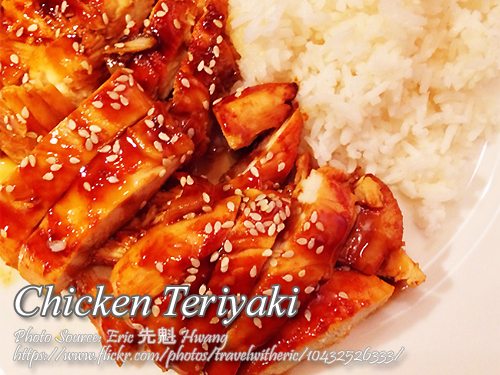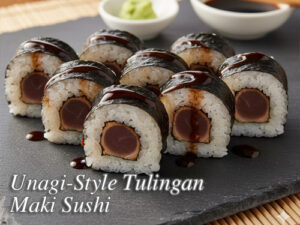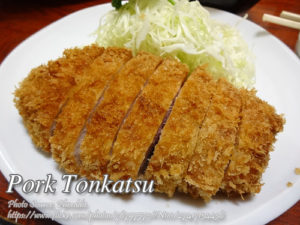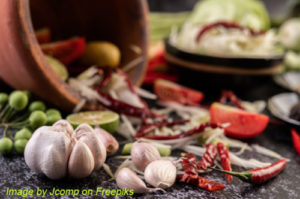Chicken teriyaki is a popular Japanese food and is I think a variant of the beef teriyaki. This is a simpler and easy to cook teriyaki dish compared to beef teriyaki and requires less cooking time. This this is so popular that there are many versions of chicken teriyaki. But one ingredient that must not be left out to make your teriyaki sauce as authentic as possible is the use of sake or Japanese rice wine. But you can always substitute it with dry sherry or sometimes white wine is used.
A Taste of Tradition: My Family’s Chicken Teriyaki Story
There was always something that gathered the family at the table when I was growing up-our take on chicken teriyaki. My Tita Liza, having spent some time working in Japan, would tell us stories of the food there, and she loved to recreate the flavors she’d fallen in love with during her stay. Among them was one delicious savory version of this Japanese classic.
It was supposedly some kind of beef teriyaki, but easier to prepare, explains why it became an instant favorite for the family. On lazy weekends or when surprise guests arrive, Tita’s specialty chicken dish was always ready. It was not only fast and flavorful, but it also filled the air in the kitchen with heavenly fragrances. Over the years, I learned how to make it from her, with slight modifications and in the manner that she taught me, yet today it is a dish that I enjoy preparing for my own family.
Simple Ingredients, Big Flavors
What makes this dish special, aside from the tenderness of the meat, is how simple the ingredients are. I recall having a cousin Carlo who lives in Manila saying once that only the humblest ingredients make the best dishes. Nothing fancy is required, except good-quality chicken fillets and a few humble pantry staples like soy sauce and sugar. Of course, to unmistakably make it teriyaki is its key ingredient, sake, or Japanese rice wine. If sake isn’t around, no problem! Carlo often substitutes with dry sherry, and once I was out of both and used white wine, the dish surprisingly held up well.
This is where the magic starts. Marinating can be completed; you just put together the chicken, sesame oil, and some seasonings. Letting the whole thing sit in the fridge for an hour then yields some fantastic results. My Lola used to say, “Good things take time,” and, well, I believe it’s true here. The fact that you let that chicken absorb all the flavors pretty much is what makes sure each bite into that is juicy and every savory good in that sauce.
Pan to Table in Minutes
Once marinated, it’s time to cook. I really love this dish because of its swiftness. Once mixed in with a small amount of cornstarch for a slight crispness, the chicken goes straight to a very hot pan for a quick stir fry. On mornings when I am in a hurry, like on the days when my daughter Mia is off to soccer practice, this meal saves me – it’s ready in only 10 minutes, but it’s almost like I had spent hours in the kitchen over dinner preparation.
Just when the chicken begins to fry golden brown, I pour in two tablespoons of homemade teriyaki sauce, some water, salt, and pepper. A short simmer, and the meal is served. I top it with sesame seeds for a bit of extra crunch and serve it over steaming white rice. It’s just such a comfort meal-it reminds me of family dinners from my childhood, where everyone’s chatting, laughing, and reaching for seconds.
The Secret to the Perfect Teriyaki Sauce
One thing Tita Liza always insisted on was that we would be making the sauce for ourselves from scratch. Okay, sure, you can buy bottled teriyaki sauce, but trust me: once you try to make it at home, you won’t go back. It’s wonderfully simple, and it uses some ingredients that you probably have lying around at home: soy sauce, sake (or sherry), water, sugar, garlic, and ginger.
My brother Mark, I think, was trying to make the sauce because he loves experimenting in the kitchen. He used honey instead of sugar. The interesting thing is that honey gives the sauce a richer depth of flavor. The key here, says Tita, is striking that balance between sweet and salty. Too much sugar, it’s overpowering; too much soy, it’s too salty. Once you get the liquid to a gentle boil, you’re pretty sure it’s done. If you want a thinner sauce, you can blend it and store it until you need it. The best part about making your own sauce is that it stores pretty well, so it’s no problem to make extra to keep in the refrigerator for meals later down the line.
A Recipe with Ancient Roots
While this dish looks and tastes very Japanese, it is intriguing to note that the word “teriyaki” comes from the words teri, which means “glaze,” and yaki, which means “grill” or “broil.” This cooking technique has been around for centuries, initially created as a method of preservative when preparing fish by allowing it to cook in soy sauce and sake. When the dish made its way around, so did other meats, such as chicken.
My uncle Rico, who is always fascinated with food history, tells me how Japanese is such a big influence in the Filipino’s culinary ways, especially along the coast. The subtle richness of this dish-to name a few-is, therefore, a reflection of that shared culinary heritage between the two nations.
All-in-all
This version of teriyaki is much more than a meal for me; it is actually a family tradition and a reminder of shared moments within the kitchen with one’s connection to the flavors of another culture. Every time I cook it, memories come flooding back of Tita Liza talking about her experiences in Japan; Carlo’s prudence inside the kitchen; and my brother Mark’s experiments within.
But the best thing about it is that it’s a dish that anybody can make. You’re either a beginner or an experienced one, and it’s approachable, forgiving, and always delicious. And, as any good recipe does, it gives you a lot of room to put your personal twist on it. So go ahead, give it a try, and create your family’s memories around the dinner table.
How to Cook Chicken Teriyaki
Ingredients
- 500 grams chicken fillet cut into serving pieces
- 5 Tbsp. teriyaki sauce see recipe below
- 1 tsp. sesame seeds toasted
- 1 Tbsp. cornstarch
- 1 Tbsp. water
- 1 Tbsp. cooking oil
- 1 Tsp. sesame oil
- 1 Tbsp. brown sugar
- salt and pepper to taste
Ingredients for teriyaki sauce:
- 1/4 cup soy sauce
- 2 Tbsp. sake or dry sherry
- 1/4 cup water
- 1 dash of ground black pepper
- 1 Tbsp. brown sugar
- 1/4 cup granulated white sugar
- 1 1/2 tsp. garlic minced
- 1 1/2 tsp. ginger grated
Instructions
How to make Chicken Teriyaki:
- Mix together chicken fillet, sesame oil, brown sugar, salt and pepper in a bowl. Marinate for and hour in a refrigerator.
- Before cooking the chicken, add in the cornstarch and mix well. Heat cooking oil in a pan and stir fry the chicken in low heat for about 7 to 10 minutes or until cooked.
- Add in 2 tablespoon teriyaki sauce, water, salt and pepper. Simmer for few seconds then remove from heat.
- Transfer to a serving plate and garnish with sesame seeds. Serve hot with cooked rice.
How to make teriyaki sauce:
- Heat a pan and pour in water, sake and soy sauce. Stir and add the white and brown sugar while stirring.
- Add in the garlic and ginger until the liquid starts boiling. Then turn off heat.
- Pass through a strainer while transferring it to a bowl. Cool and set aside for use in cooking your chicken teriyaki.
Video
Notes
Cooking Tips:
Marinate for Maximum Flavor
To make your food well-filled with the flavor, marinate at least an hour before hand. Even better for marination, if possible, the longer it is marinated, the better, since it will allow the meat to drink up the savory flavors of the sesame oil and seasonings. The longer you marinate, the more juicy and tastier it becomes.Balance Sweet and Salty in the Sauce
Prepare the teriyaki sauce by deciding the right amount of mixing for sweetness and saltiness. Too much sugar makes the sauce to be sticky, and too much soy sauce will overrun the dish. Prepare the base amount in the recipe, then work with your taste buds from there.Prepare On Low Heat for Tender Chicken
The heat while stir-frying the marinated chicken should be kept low so that it does not dry out. It needs to be cooked slowly to ensure that it is tender and juicy, with a good golden dressing. Stir often to check that it does not burn while cooking evenly.





